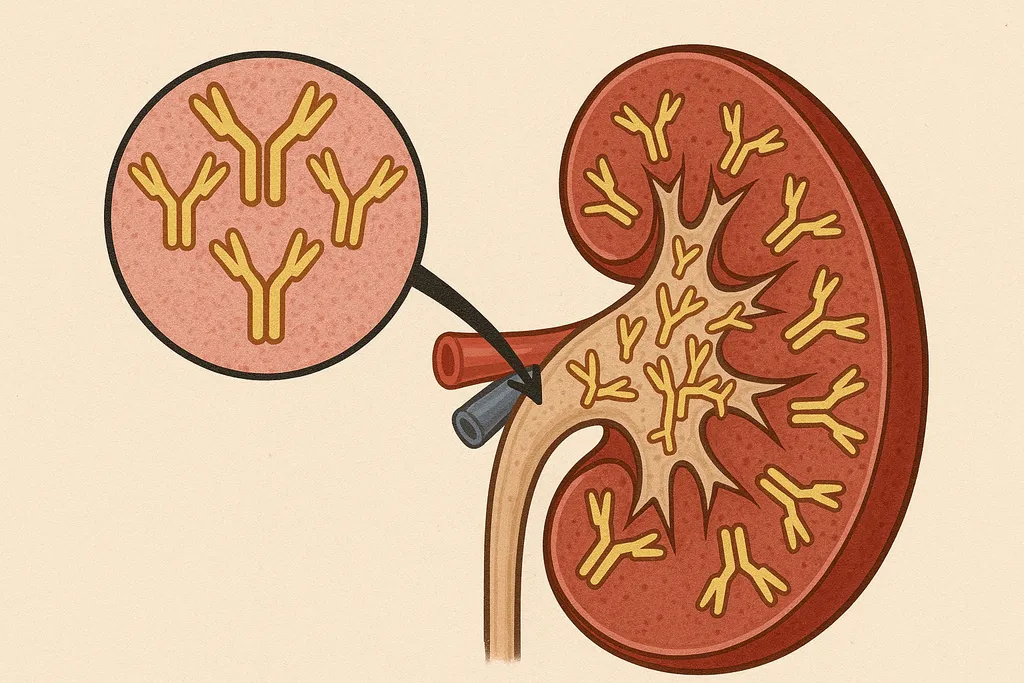Can AI Detect MGUS Progression With Our Fat Cells?

A new research perspective was published in Oncotarget's Volume 15 on January 16, 2024, entitled, “Bone marrow adipocytes provide early signs for progression from MGUS to multiple myeloma.”
Multiple Myeloma (MM) is a type of blood cancer where abnormal plasma cells grow in the bone marrow. Before myeloma develops, there's a stage called Monoclonal Gammopathy of Undetermined Significance (MGUS), with a low risk of turning into myeloma each year. Detecting MGUS patients at high risk of myeloma early on could improve treatment and quality of life.
Adipocytes are commonly found in the bone marrow and in the body because their function is to store fat. they can expand or collapse. The adipocytes in the bone marrow are special because they can change back to blood cell-producing cells when needed due to a lack of blood cells or overproduction.
Researchers from various Danish institutions studied changes in bone marrow fat tissue (BMAT) as a potential early sign of MGUS turning into myeloma. They used AI technology to analyze bone marrow samples from MGUS patients, some of whom progressed to multiple myeloma within 10 years.
Key Findings
- While overall fat tissue in the bone marrow didn't differ between groups, the density of a specific type of fat cell called bone marrow adipocytes (BMAd) was lower in MGUS patients who developed multiple myeloma.
- The size and shape of bone marrow adipocytes were different between the two groups. MGUS patients who progressed to multiple myeloma showed larger and rounder BMAd compared to those who didn't progress.
These changes in bone marrow fat tissue could act as early warning signs for MGUS progressing to multiple myeloma, allowing for timely interventions and personalized treatment plans. The AI-based analysis used in this study is both cost-effective and quick, making it feasible for clinical use.
AI Can Accelerate Research!
Understanding how bone marrow fat tissue changes could be crucial in identifying MGUS patients at risk of developing MM. This early detection could lead to better treatment outcomes and improved quality of life for patients. The research highlights AI technology's potential to revolutionize diagnosing and managing multiple myeloma.
Unlock Personal Insights Into Your Diagnosis for Free with HealthTree Cure Hub
By securely connecting your electronic health records, HealthTree Cure Hub allows you to discover treatment options, find a specialist, keep track of your disease, and so much more! Sign up for a free patient account today to get started.
A new research perspective was published in Oncotarget's Volume 15 on January 16, 2024, entitled, “Bone marrow adipocytes provide early signs for progression from MGUS to multiple myeloma.”
Multiple Myeloma (MM) is a type of blood cancer where abnormal plasma cells grow in the bone marrow. Before myeloma develops, there's a stage called Monoclonal Gammopathy of Undetermined Significance (MGUS), with a low risk of turning into myeloma each year. Detecting MGUS patients at high risk of myeloma early on could improve treatment and quality of life.
Adipocytes are commonly found in the bone marrow and in the body because their function is to store fat. they can expand or collapse. The adipocytes in the bone marrow are special because they can change back to blood cell-producing cells when needed due to a lack of blood cells or overproduction.
Researchers from various Danish institutions studied changes in bone marrow fat tissue (BMAT) as a potential early sign of MGUS turning into myeloma. They used AI technology to analyze bone marrow samples from MGUS patients, some of whom progressed to multiple myeloma within 10 years.
Key Findings
- While overall fat tissue in the bone marrow didn't differ between groups, the density of a specific type of fat cell called bone marrow adipocytes (BMAd) was lower in MGUS patients who developed multiple myeloma.
- The size and shape of bone marrow adipocytes were different between the two groups. MGUS patients who progressed to multiple myeloma showed larger and rounder BMAd compared to those who didn't progress.
These changes in bone marrow fat tissue could act as early warning signs for MGUS progressing to multiple myeloma, allowing for timely interventions and personalized treatment plans. The AI-based analysis used in this study is both cost-effective and quick, making it feasible for clinical use.
AI Can Accelerate Research!
Understanding how bone marrow fat tissue changes could be crucial in identifying MGUS patients at risk of developing MM. This early detection could lead to better treatment outcomes and improved quality of life for patients. The research highlights AI technology's potential to revolutionize diagnosing and managing multiple myeloma.
Unlock Personal Insights Into Your Diagnosis for Free with HealthTree Cure Hub
By securely connecting your electronic health records, HealthTree Cure Hub allows you to discover treatment options, find a specialist, keep track of your disease, and so much more! Sign up for a free patient account today to get started.

about the author
Jimena Vicencio
Jimena is an International Medical Graduate and a member of the HealthTree Writing team. She has a passion for languages and is currently learning Japanese. In her free time, she loves playing with her cats. Jimena is also pursuing a bachelor's degree in journalism.
More on Treatment Advances
Trending Articles




Get the Latest Multiple Myeloma Updates, Delivered to You.
By subscribing to the HealthTree newsletter, you'll receive the latest research, treatment updates, and expert insights to help you navigate your health.











